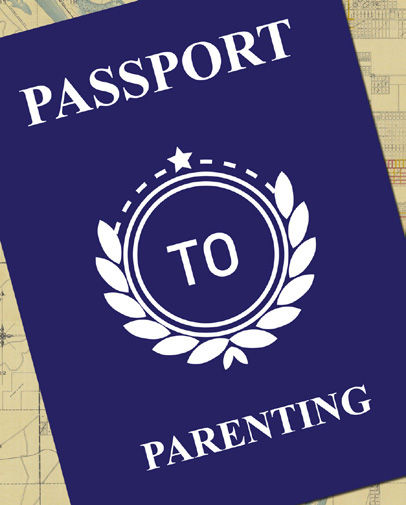Setting: It’s Tuesday night. It’s been a busy day. You’ve been juggling responsibilities at home and at work; making sure lunches are packed, emails are read, and zoom links are sent. You sit down to dinner with your family.

Parent: “How was school?”
Child: “Fine”
Parent: “What did you learn?”
Child: “Nothing”
Parent: Walks away from interaction feeling frustrated, disconnected, and not good enough
Child: Walks away from interaction feeling frustrated, disconnected, and not good enough
This is a familiar scene that has played out around dinner tables across America for generations. If you pause and reflect, you might even remember being that child or teen. You may even tap into a sense of humor or empathy as you reflect on your parents’ attempts to connect with you, and now find yourself in their shoes.
We have a lot of narratives to explain what is happening here. As the child or teen in this sequence, you may have been labeled as ‘moody’ or ‘just going through a phase.’ As the adult, you may find yourself falling into a self-blaming narrative and experience thoughts such as, ‘I’m their mom, I’m supposed to be able to connect with my child,’ or worst-case-scenario explanations for why your child isn’t more forthcoming.
At the end of the day, parents want to feel connected to their children, and children want to feel connected to their parents. A large part of the misattunement that occurs in these interactions can be understood as a mismatch of ways adults and children perceive the world and communicate information. As the Holiday season quickly approaches, many families are preparing to spend increased time together. Gaining more awareness of developmentally appropriate ways of communicating and making even small changes can greatly impact your relationship with your child or teen (or nephew, niece, or grandchild). Maximize opportunities to connect with the growing minds in your life this Holiday season with these tips and tricks.
Use reflective statements
Questions can be challenging for many reasons. The part of the brain responsible for processing and responding to a question (the frontal lobes) requires reflective and abstract thinking skills, which are still under construction, especially in younger children (Ray, 2016).
Questions can also communicate a lack of understanding and demand an answer, which the child may or may not have (Landreth, 1991). Questions also rely upon verbal skills to respond, which is another skill set still under development (Ray, 2016). Using ‘reflective statements’ can be a more developmentally appropriate way to connect, as reflective statements target a different part of the brain (the mid-brain), communicate understanding, and give your child the choice of whether they want to share more information (Landreth, 1991). For example: ‘How was soccer?’ could be reframed as ‘I know you had your first day of soccer today. That must have been fun…’ or, ‘what are you doing?’ could be reframed as, ‘looks like you’re putting those blocks together…’
Be playful
Children, as well as teens, are more likely to retreat into a more defensive part of their brain when they feel like they’re on-the-spot. Infusing playfulness into these interactions can help them feel more open and engaged (Kestly 2014). My favorite way to do this with younger school-aged children is through playing guessing games to check in about the day (Seigel & Bryson, 2012). For example, “Tell me two things that really happened today and one that didn’t.
Then I’ll guess which two are true (Seigel & Bryson, 2012, p. 84).” Set the tone by going first and model the type of sharing and vulnerability you’re hoping to elicit.
Orient to the present moment
Orientation to time is different for children vs. adults. Adults are primarily oriented to the future, while children are primarily oriented to the present moment (Ray, 2016). This at least partially explains why one week feels like a blink of an eye as an adult, but feels so long to children. The takeaway here is that instead of engaging a child in a conversation about something that happened in the past, or will happen in the future, look for ways to connect with them in the present moment. This could mean engaging in (playing!) whatever activity they’re currently engaged in, or making reflective statements about what the child is currently doing, saying, or feeling. These present-moment connections will also help create warm memories of you and contribute to the type of relationship you desire.
Ask open-ended questions
This communication strategy can be especially helpful for teens, who have more advanced verbal skills. An example of a close-ended question is, “did you have a good day?” It is considered ‘closed’ because it only gives your teen a couple of options for responding, ‘yes,’ or, ‘no.’ Asking more open-ended questions can better help facilitate dialogue. Examples include:
“What was the most challenging part of today?” or “what made you smile today?” or “what made you feel proud of yourself today?” Feel free to get creative with this.
References
Kestly. T. A. (2014). The interpersonal neurobiology of play: Brain-Building Interventions for Emotional Well-Being. Norton and Company Incorporated.
Landreth, G. (2012). Play Therapy: The Art of the Relationship. Routledge.
Ray, D. C. (2016). A Therapist’s Guide to Child Development: The Extraordinarily Normal Years. Routledge.
Sigel, D. J. & Bryson, T. P. (2012). The Whole-Brain Child: 12 Revolutionary Strategies to Nurture Your Child’s Developing Mind. Bantam Books.




















